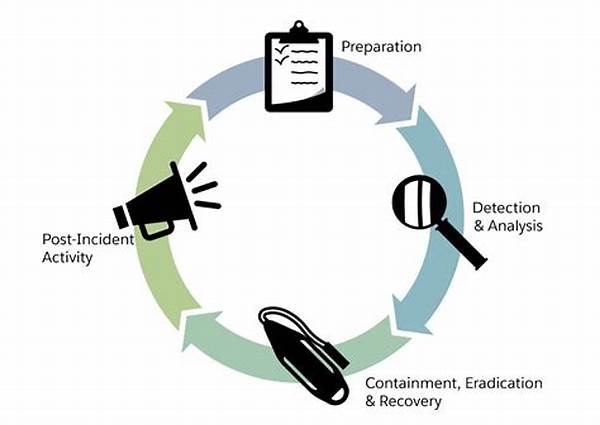In today’s fast-paced world of business and technology, incidents are almost an inevitable part of organizational operations. From data breaches and security issues to equipment failure and human error, incidents can have severe consequences. But fear not, for post-incident analysis and reporting are here to save the day! With a fine blend of storytelling and statistical wizardry, we’ll dive into why this process is critical and how it can turn your catastrophe-prone business into a well-oiled machine.
Imagine waking up one day, only to find your entire system has crashed. Panic ensues, chaos reigns, and employees scurry like ants caught in a sudden downpour. Here’s the kicker – these incidents don’t just cost money, they can also damage your company’s reputation. And let’s face it, no one wants to associate with a business that can’t get its act together. Enter post-incident analysis and reporting, your ticket to avoiding these nightmarish scenarios in the future.
These analyses help you identify the root cause of an incident, evaluate the effectiveness of your response, and develop strategies to prevent future occurrences. It’s like being a detective in a gripping crime story, only this time, the weapons are risk assessments, data metrics, and corrective actions. Not to mention, there’s a sprinkle of humor too: because sometimes you have to laugh through the blunders to learn from them!
Why Post-Incident Analysis and Reporting Matter More Than Ever
Post-incident analysis and reporting are crucial because they provide a structured approach to understanding incidents and implementing lessons learned. The goal is not to point fingers but to foster a culture of safety and innovation. It’s about turning an “Oops!” moment into an “Aha!” insight. Not only do they enhance operational efficiency, but they also increase employee morale by demonstrating a commitment to improvement and transparency. It’s safe to say, the magic lies not in avoiding incidents entirely, but in how well we learn and adapt from them.
—
Post-incident analysis and reporting have become integral parts of modern business strategy, especially in industries where risk management and compliance are non-negotiable. From IT firms to healthcare providers, this double act is essential for survival in a competitive landscape. They are not just about documenting mishaps; they’re about narrating a story of resilience, learning, and transformation.
By meticulously dissecting each incident, organizations can unearth hidden vulnerabilities in their processes. This mirrors a superhero discovering their kryptonite – once aware, remedies can be developed, and performance can catapult into higher echelons. Employees become more alert, technology systems more robust, and organizations more adept at preempting disasters.
Key Features of Post-Incident Analysis and Reporting
The Investigative Approach
When talking about the depth of analysis, it’s crucial to focus on the methodology that embraces an investigative approach. The aim is to reconstruct events leading to the incident and identify what went wrong. With data-driven insights, the journey from reactive chaos to proactive management unfolds, creating a tale worth telling in any boardroom discussion.
Post-incident analysis and reporting also offer a perfect opportunity to understand the impact of the incident on stakeholders, and subsequently, reconcile any dissonance. It’s about having candid conversations with affected parties, acknowledging missteps, and rebuilding trust. In essence, it maintains the corporate aura intact, while weaving a compelling narrative of accountability and progression.
—
—
The overarching purpose of post-incident analysis and reporting is to cultivate a culture of accountability and continuous improvement. By delving deep into each incident, businesses can not only glean insights but also anticipate potential disruptions. It’s like having a crystal ball, giving companies an edge in crafting preemptive measures, which is invaluable in safeguarding future operations.
Post-incident analysis and reporting go beyond the immediate aftermath of an incident. They lay the groundwork for long-term resilience and business optimization. By focusing on these analyses, organizations not only fix what is broken but can also foresee and intercept upcoming challenges. In an ever-competitive landscape, this foresight translates into increased operational efficiency and, ultimately, a more agile and reliable brand identity.
—
—
The trend of post-incident analysis and reporting is on the rise, and rightly so. This strategic approach not just molds the backbone of risk management but also offers a springboard for thriving in a volatile business landscape. It’s an indispensable tool that bridges the gap between failure and excellence.
Central to the success of post-incident analysis and reporting is their ability to offer a structured framework through which organizations can review incidents quantitatively and qualitatively. With a mix of statistical analysis and comprehensive documentation, this practice provides a roadmap for operational efficiency and risk management – a journey every business should embark on.
The Process – A Deep Dive
Methods and Tools
Organizations rely on a plethora of methods and tools to conduct thorough analyses. From interviews and surveys to data analytics software and historical records review, the tools are as varied as they are critical. By leveraging these resources, businesses capture a full spectrum of factors surrounding each incident.
Through post-incident analysis and reporting, businesses move from just surviving incidents to leveraging them as tactical advances in their industry. And let’s not forget the added bonus – the art of narrative. Transforming dry facts into a compelling story not only makes the lessons stick but also fosters a proactive culture that thrives on continuous learning.
—
Sure, the process might sound like detective work straight out of a mystery novel, but the reality is, post-incident analysis and reporting are more about people and processes. They revolve around the idea that everyone, from the newest recruit to the CEO, contributes to the organization’s success and resilience. Through this collaborative effort, businesses don’t just bounce back – they leap forward!

